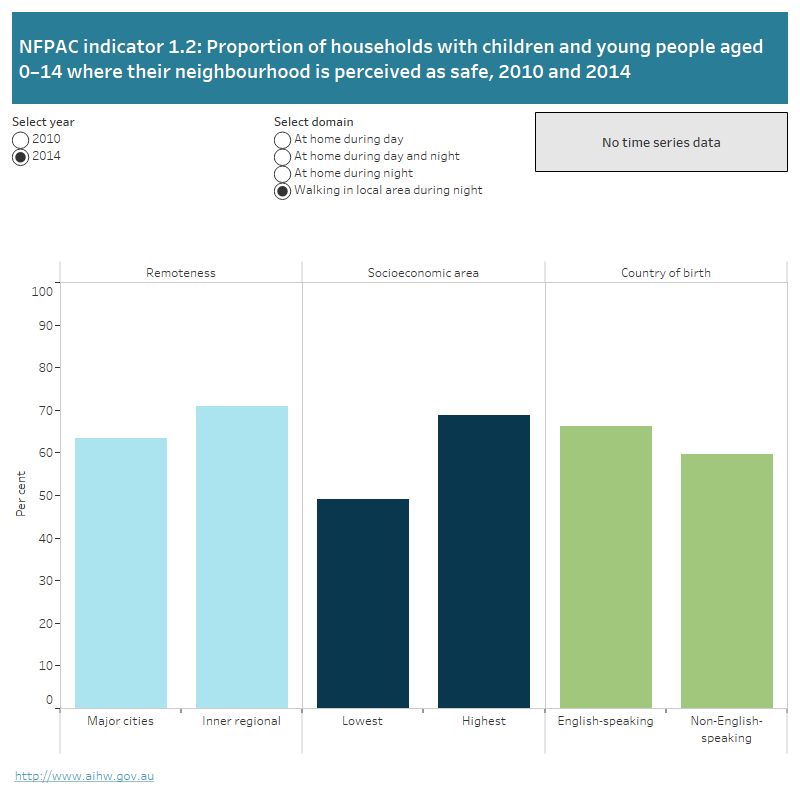1.2 Perceived safety
Parental perception of neighbourhood safety affects children’s activities and can have a significant impact on children’s health, development and wellbeing.
Perceptions of safety often relate to perceptions of crime and social problems in the neighbourhood, previous experience as a victim of crime, and the level of trust in the local community.
In the data provided, ‘feels safe’ refers to adult respondents that reported they felt ‘safe’ or ‘very safe’.
Trend data: For all indicator displays, the yearly trend is limited to indicators with 3 or more years (including the current year) of comparable time series data. To see the trend click on “Yearly Trend” button on the display. Where 3 or more years of comparable data including the most recent year is not available, a “No time series data” message is shown on the display.
The bar chart shows the proportion of households with children and young people aged 0–14 where their neighbourhood is perceived as safe, by remoteness, socioeconomic area and country of birth (English or non-English speaking). Data can be selected by years (2010 and 2014) and domains (at home during the day, at home during day and night, at home during night, walking in local area at night).

Source: Australian Bureau of Statistics (ABS) General Social Survey, Australia
See the supplementary data tables for further information and footnotes about these data.
Indicator technical specifications
The information below provides technical specifications for the summary indicator data presented in the quick reference guide.
| Definition | Data source | |
|---|---|---|
| Numerator | Number of households with children aged 0-14 years where the respondent reports feeling safe or very safe when home alone at night | ABS General Social Survey |
| Denominator | Number of households with children aged 0-14 years in the reference period | ABS General Social Survey |
Explanatory notes
The ABS General Social Survey (GSS) asks about how safe a person feels in various circumstances – for example, when home alone at night, or when walking alone through their local area at night.
Data items on the GSS are collected at the person-level (not household-level); therefore it is the household respondent (aged 18 years and over) who is asked about their perceptions of safety (not the household as a whole). It is possible that the household respondent may be any adult in the household and not necessarily a parent. The child’s perception and understanding of their own safety may differ significantly from the adult’s.


